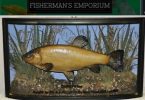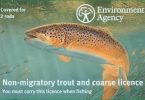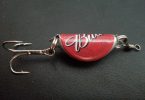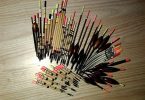Legal Obligation to Notify KHV Disease
1. The Diseases of Fish (England and Wales) Order 2007 (SI 2007 No.864), which came into force on 6 April 2007, makes it a legal obligation to report suspicion that inland waters have become infected with KHV Disease.
2. This legal obligation applies to any person entitled to take fish from inland waters, or responsible for the care of inland waters. This will include riparian owners, fish farmers, fisheries owners, and their staff (anglers may also notify suspicion of disease). Anyone required to notify, and who fails to do so without reasonable excuse would be guilty of an offence under the Diseases of Fish Act 1937(as amended).
What constitutes suspicion of KHV Disease?
3. Dead or dying fish with other clinical evidence such as bleeding from the gills, white patches on the gills or skin, sunken eyes and hyperactive behaviour in fisheries. These signs usually appear when water temperatures are between 15o and 28oC. For more advice about KHV Disease please refer to http://www.efishbusiness.co.uk/
Who should be notified and what happens next?
4. The Fish Health Inspectorate (FHI) at the Centre for Environment, Fisheries and Aquaculture Science (Cefas),
5. Where clinical signs of disease are present, samples will be taken for diagnostic testing to see if the outbreak is due to KHV Disease. Results from the diagnostic tests may take up to 14 days.
6. If the FHI strongly suspects that the mortalities are due to KHV Disease, they may immediately prohibit movements on and off the site by means of a thirty-day notice (TDN) in the case of Fish Farms and a Designated Area Order in the case of all other sites.
What control arrangements apply when KHV disease is confirmed?
7. The control arrangements may vary in approach depending on the facilities, environment in which the fish are kept, and the risk of further spread of infection. Details are given below.
Fisheries, other inland sites, Fish Farms, Fish Dealers and Retailers
- the FHI will advise on the most appropriate methods for the control of the disease. This may require the culling of stocks of affected fish, and the cleansing and disinfection of the site. Where cleansing and disinfection is not practicable (as may be the case in most fisheries and some farms), a Designated Area Order (DAO) will be placed on the affected site.
- The effect of the DAO will be to make public the location of the affected site and place restrictions on the movement of live fish on and off the site. The DAO will remain in place for at least 12 months pending the outcome of joint Defra/industry funded research, currently taking place, to determine the extent of KHV infection in English and Welsh waters.
- Live fish movements on and off site will not be allowed while there is evidence of clinical disease on the site. However, in the absence of clinical disease, farm and other site owners may apply to the FHI for a relaxation of the restrictions to help facilitate the continuity of business.
- The FHI will consider the need for follow-up inspection of contact sites on a case-by-case basis but this will not involve the sampling of fish unless clinical signs of disease are observed or reported.
- The Environment Agency will consider applications for the introduction of fish to affected fishery sites but will not consent to the introduction of live fish sourced from infected sites.
Fisheries and Angling Activities
- The FHI may (on application) allow movements of non-susceptible species or in certain cases, susceptible species, onto affected fisheries to enable angling activity to continue. However, such movements will only be permitted if site owners introduce and ensure the application of appropriate biosecurity measures for all those using the site including anglers. Providing the biosecurity measures are observed there should be negligible risk of transfer of KHV disease to other fishery sites through angling activity. All movements will also be subject to consent from the Environment Agency.
Aquaria and Garden Ponds
- Hobbyists and other owners of ornamental fish should notify the FHI of suspicion of infection with KHV Disease. The FHI will make a diagnosis on the basis of information provided about clinical signs of disease and assess the potential for the spread of infection.
- Where the spread of infection is assessed as negligible, no further action will be taken by the FHI. Site owners will instead be provided with written advice on the management of KHV Disease in aquaria and garden ponds.
- Where the assessment indicates potential for spread to inland waters, a sample will be taken for diagnostic purposes and, on confirmation of the disease, a cull of the affected fish and disinfection of the facility will be advised. If this is not feasible, a DAO will be placed on the site to prohibit the movement of fish on or off the site.
- Diagnostic testing on sites assessed as negligible risk will be available only on a commercial basis through Cefas Technology Ltd (CTL).
Please Note: The Animal Welfare Act 2006 makes owners and keepers responsible for ensuring that the welfare needs of their animals (including fish) are met. This includes taking appropriate measures to protect them from disease.
Contact for Notification
Fish Health Inspectorate Environment Agency
Cefas Fish Health, Ageing and Species
Barrack Road, The
Tel: 01305 �” 206600 Tel: 01480 483 802
Fax: 01305- 206602 Fax:01480 433 873
Email: fishhealthinspectorate@cefas.co.uk Email: nflfishhealth@environment-agency.gov.uk







